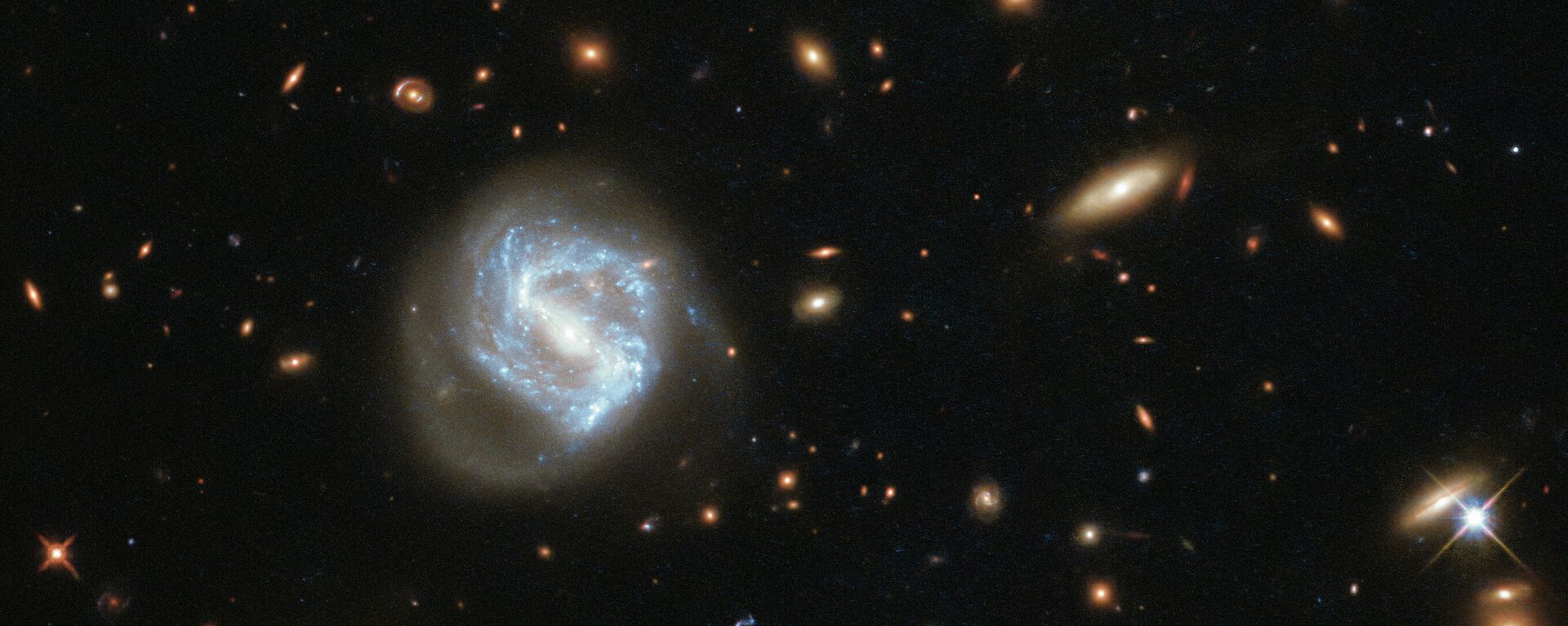https://sputnikglobe.com/20220520/galaxies-devoid-of-dark-matter-formed-during-massive-collision-billions-of-years-ago-study-says-1095669632.html
Galaxies Devoid of Dark Matter Formed During Massive Collision Billions of Years Ago, Study Says
Galaxies Devoid of Dark Matter Formed During Massive Collision Billions of Years Ago, Study Says
Sputnik International
The authors of a study postulate that the formation of “dark-matter-free galaxies”, one or several, occurs as “gas separates from the dark matter” during a... 20.05.2022, Sputnik International
2022-05-20T16:55+0000
2022-05-20T16:55+0000
2022-05-20T16:55+0000
science & tech
galaxies
dark matter
collision
https://cdn1.img.sputnikglobe.com/img/107371/68/1073716864_0:54:1085:664_1920x0_80_0_0_42709ce979ed24dbdef6ea0ee3301955.jpg
A new theory developed by a team of astrophysicists offers a possible explanation to the existence of several dwarf galaxies that seem to contain little to no dark matter, Phys.org reports.According to the media outlet, the new study expands on other research that indicates evidence of the separation of normal and dark matter on a large scale during collisions between clusters of galaxies.Pointing to DF2 and DF4, two ultra-diffuse galaxies located in the NGC 1052 group, the researchers argue that these galaxies’ properties seem to indicate "little to no dark matter", and that they were "formed in the aftermath of high-velocity collisions of gas-rich galaxies".Noting that the two galaxies in question are also part of an "apparent linear substructure of seven to eleven large, low-luminosity objects", the researchers suggest that "these all originated in the same event, forming a trail of dark-matter-free galaxies", with the collision event likely occurring around eight billion years ago.
https://sputnikglobe.com/20220419/astronomers-discover-missing-link-of-early-galaxies--1094896591.html
Sputnik International
feedback@sputniknews.com
+74956456601
MIA „Rossiya Segodnya“
2022
News
en_EN
Sputnik International
feedback@sputniknews.com
+74956456601
MIA „Rossiya Segodnya“
Sputnik International
feedback@sputniknews.com
+74956456601
MIA „Rossiya Segodnya“
science & tech, galaxies, dark matter, collision
science & tech, galaxies, dark matter, collision
Galaxies Devoid of Dark Matter Formed During Massive Collision Billions of Years Ago, Study Says
The authors of a study postulate that the formation of “dark-matter-free galaxies”, one or several, occurs as “gas separates from the dark matter” during a collision.
A new theory developed by a team of astrophysicists offers a possible explanation to the existence of several dwarf galaxies that seem to contain little to no dark matter, Phys.org reports.
According to the media outlet, the new study expands on other research that indicates evidence of the separation of normal and dark matter on a large scale during collisions between clusters of galaxies.
Pointing to DF2 and DF4, two ultra-diffuse galaxies located in the NGC 1052 group, the researchers argue that these galaxies’ properties seem to indicate "little to no dark matter", and that they were "formed in the aftermath of high-velocity collisions of gas-rich galaxies".
"The gas separates from the dark matter in the collision and subsequent star formation leads to the formation of one or more dark-matter-free galaxies," the team postulates in their paper published in the journal Nature.
Noting that the two galaxies in question are also part of an "apparent linear substructure of seven to eleven large, low-luminosity objects", the researchers suggest that "these all originated in the same event, forming a trail of dark-matter-free galaxies", with the collision event likely occurring around eight billion years ago.
"We also tentatively identify the highly dark-matter-dominated remnants of the two progenitor galaxies that are expected at the leading edges of the trail", the researchers state in the abstract of their work.


